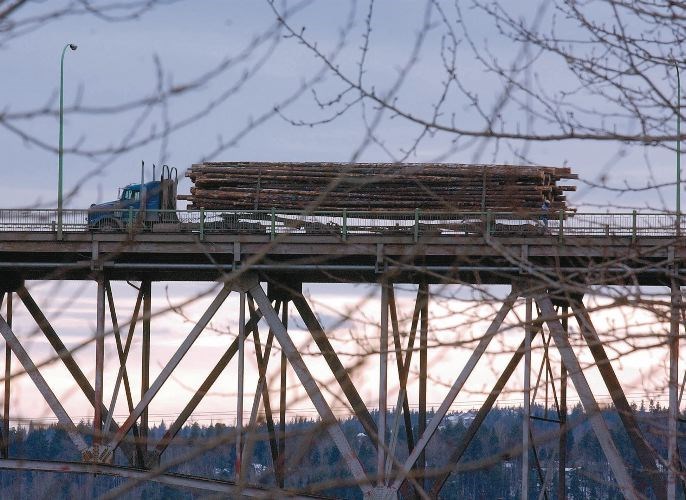RCMP helped a logging truck driver avert potential disaster Friday when police tracked down a precariously perched load and safely pulled it over.
"RCMP received a number of calls from concerned motorists of a logging truck with a long log sliding out of the rear of the trailer," said Burns Lake RCMP Staff Sgt. Mike Kisters on Monday, following several days of warm, wet conditions across the region.
"RCMP's North District Traffic Services was in the area and located the suspect truck near the Tintagel rest stop. The log was secured and the load delivered to the Babine Mill."
The Central Interior Logging Association's executive director MaryAnne Arcand said this type of situation doesn't happen often, but it is an ever present danger so several levels of standards and enforcement are in place to reduce the risk.
Most notably for the industry, the binders and cables around each log load are specially engineered for this job, testing is done to ensure they are up to legislated standards, and laws are in place that insist drivers stick to the regulations.
"Generally, a log hauler will check a load three or four times between the landing and the mill, checking on binders and to see if the load has shifted, and that is by law," said Arcand.
"The loads are wrapped at the landing, but once the driver reaches the [public resource road] the driver stops and gets out, and gives the load another going-over to make sure nothing has shifted and the binders are still tight. That happens again whenever the driver stops, and for long-haul drivers they are required to stop [at certain time intervals] to check everything again and again as they go."
Problems occur with added moisture. In addition to tree trunks already potentially caked in ice or snow, there is also ambient water splashing and spraying around when it is above zero degrees.
Most times, she explained, logging trucks in the Prince George area are hauling softwoods with highly abrasive bark, but in the surrounding region where there are aspen loads, the stems can be so slippery that trucks are required to have rear gates.
Another factor in favour of the motoring public is physics. A forward moving truck is rarely going to pitch a tree stem backwards against the prevailing momentum.
"The driver is actually the one in the most danger, which is why the trucks have to have those big bull-boards protecting the cab from trees shooting forward," she said.
Yet, a crooked tree trunk inside the bunch, or any settling of the load, or slippery conditions can allow some stems to emerge out the back of a load. The other drivers have to do their own risk calculations around these trucks, Arcand said.
"You have to stay well back, and you have to be aware."


.png;w=120;h=113;mode=crop)
